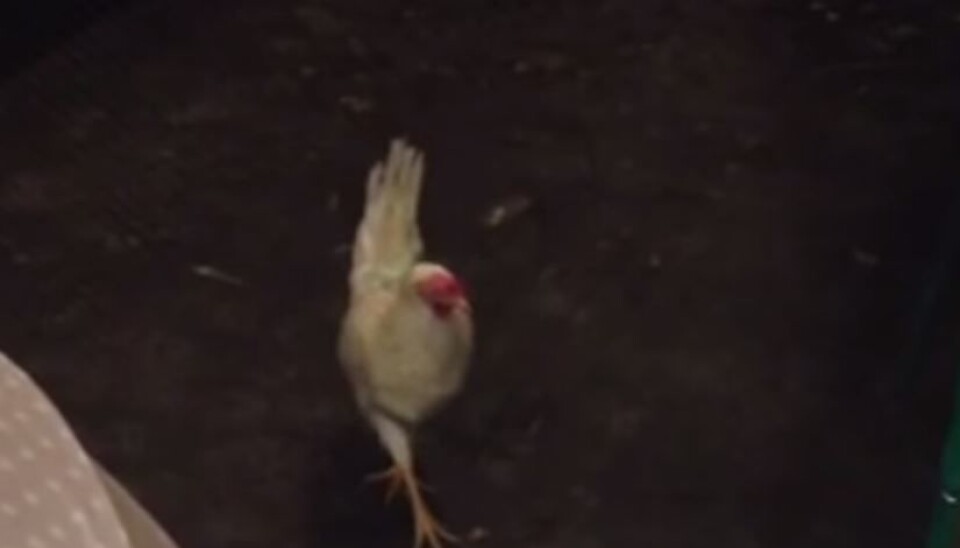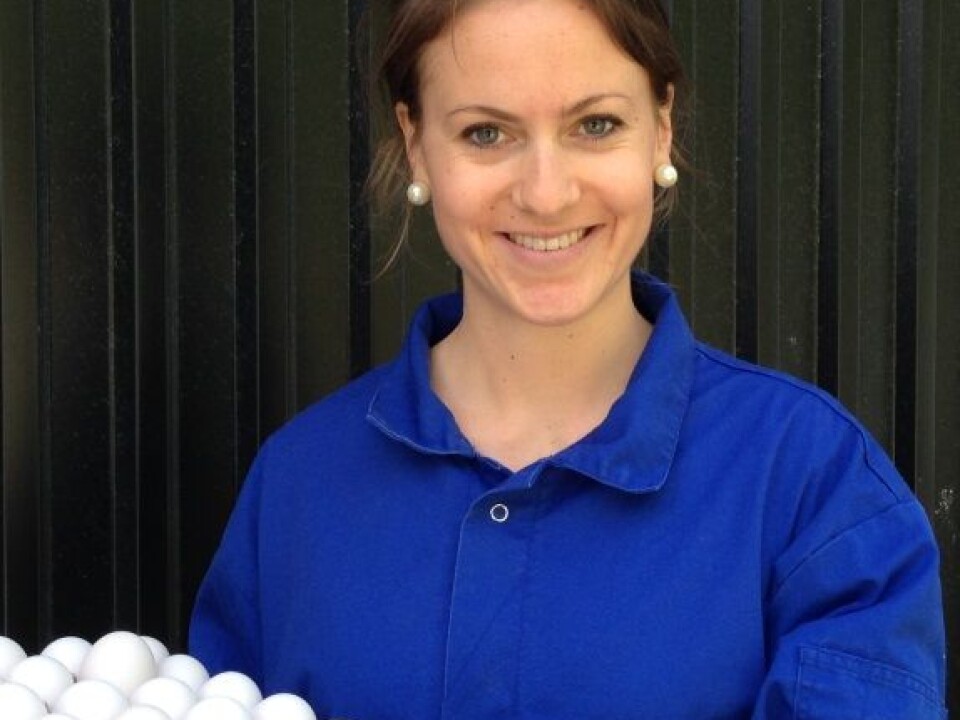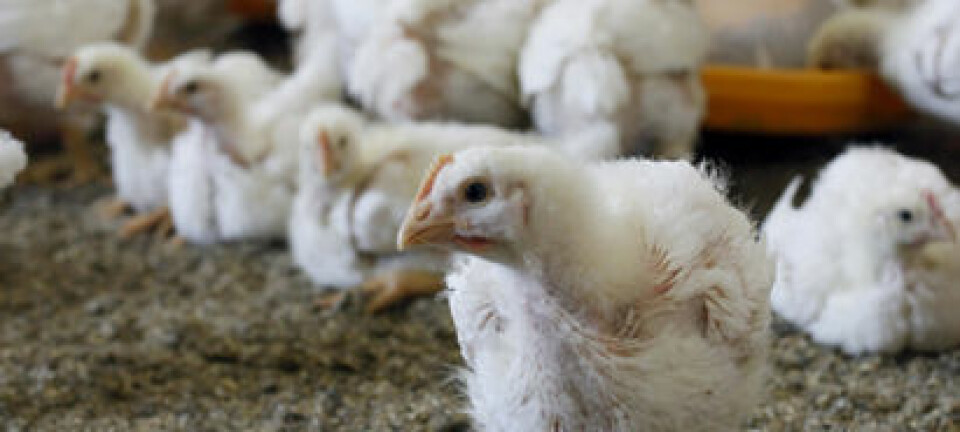An article from Norwegian University of Life Sciences (NMBU)

Scaring chickens to see who is most afraid
Are free-range chickens more easily frightened than chickens that have lived their lives in cages? Researchers seek out the answer by scaring them.
Denne artikkelen er over ti år gammel og kan inneholde utdatert informasjon.
The room is quiet. A chicken sits in the chicken coop and researcher Margrethe Brantsæter is sitting on a chair. They look at each other. Will the chicken approach the researcher or will it retreat from her?
Brantsæter is researching fear and stress in chickens, comparing chickens that are raised as free-range with those who have lived in cages in the first 16 weeks of their lives.
More robust egg laying hens
480 chickens take part in this research project at NMBU. Half of these are free-range, while the rest are battery chickens.
All of them are branded with information about what kind of environment they were reared in.

Brantsæter wants to find out if there is any difference in how the chickens react to unfamiliar objects. They are tested when they are 19 and 23 weeks old.
The main objective of this research project is to identify the best methods for rearing robust egg laying hens, thus ensuring good egg production output. Brantsæter is specifically looking at how the bird’s development is influenced by the environment in its first months.
Professional scarecrow
The researcher takes out one chicken at a time, and places it in a room which is unfamiliar to it.
The room is designed by researchers and consists of three black walls and a wire mesh wall. Right behind the mesh is an unknown object.
“In one of the experiments the strange object is an umbrella. In another experiment, it is me, Therefore, I tend to say that I currently work as a professional scarecrow,” Brantsæter said.
The chicken’s movements are recorded, and researchers are looking to see if there is any difference in activity and fear among those who are raised in cages and those who are raised in aviaries, which is a type of free-range environment.
Live freer, but shorter life
“It is obvious that animals have more freedom when they live in aviaries,” says Brantsæter.
But she emphasizes that keeping chickens in aviaries also requires more skills of the owner.
The aviary is a far tougher environment for chickens than cages. The chickens are put together with chickens they do not know. It can cause more friction and pecking. It can also result in the chickens not being able to locate the feed and water.
As the infection rate in aviaries also is higher, the mortality rate is higher in aviaries than in cages.
On the other hand, aviaries have a beneficial effect on development and behavior.
“Put another way, free-range chickens are freer than battery chickens, but they do live shorter lives,” says Associate Professor at NMBU, Andrew M. Janczak.
Battery chickens prefer cages
Experience also shows that pullets reared in cages should continue to live in cages, and, equally, chickens reared in aviaries should be kept under the same conditions for the rest of their lives.
“Research shows that chickens are stressed by switching environment. As a result, the living conditions should remain the same throughout the chicken’s life.”
“Chickens that are raised in cages will never thrive in a aviary house. The same applies vice versa. Chickens that have been able to move freely, show more positive behavior in cages in the first few weeks, but have higher mortality later in life,” says Brantsæter.
Aviary chicken move around more
The 480 chickens in Bratnsæter’s study are placed in chicken coops that are higher than the standard height, two meters instead of 120 centimetres high. The highest roost in the coop is placed 140 centimetres above the ground.
Chicken from the two different rearing environments are put together in coops, and the purpose is to look at how animals utilize the space in the coops.
“Aviary chickens are used to move more than battery chickens, and preliminary results suggest that they utilize the height of the coop to a greater extent than battery chickens,” says Brantsæter.
Brantsæter also investigates animal physiology after chickens have been euthanized.
Measurements of the farming environment's impact on the brain and examination of stress hormones will show how the environment in early life affects the chickens’ biology.
--------------------
Read the Norwegian version of this article at forskning.no
Translated by: Kristine Løwe


































